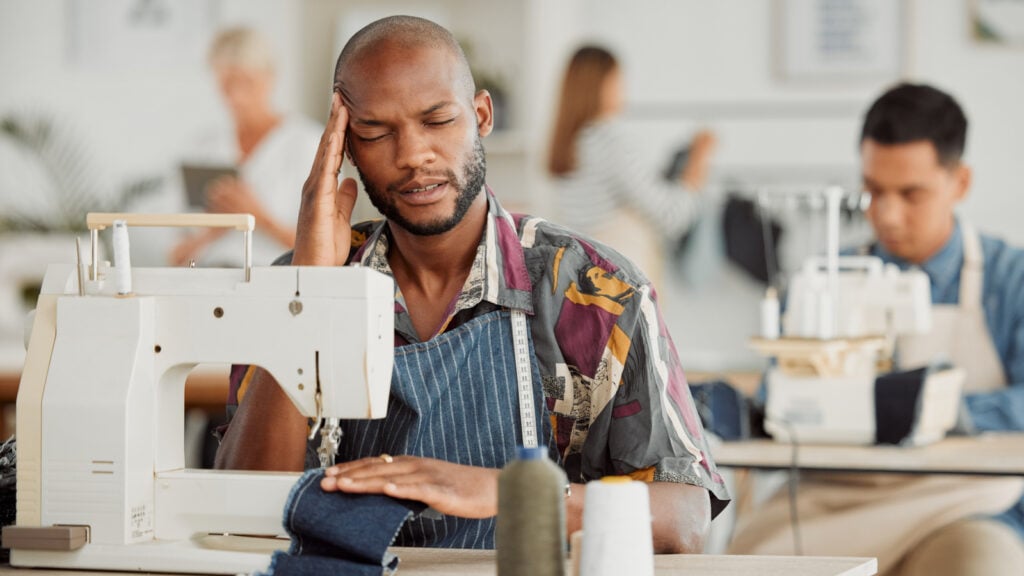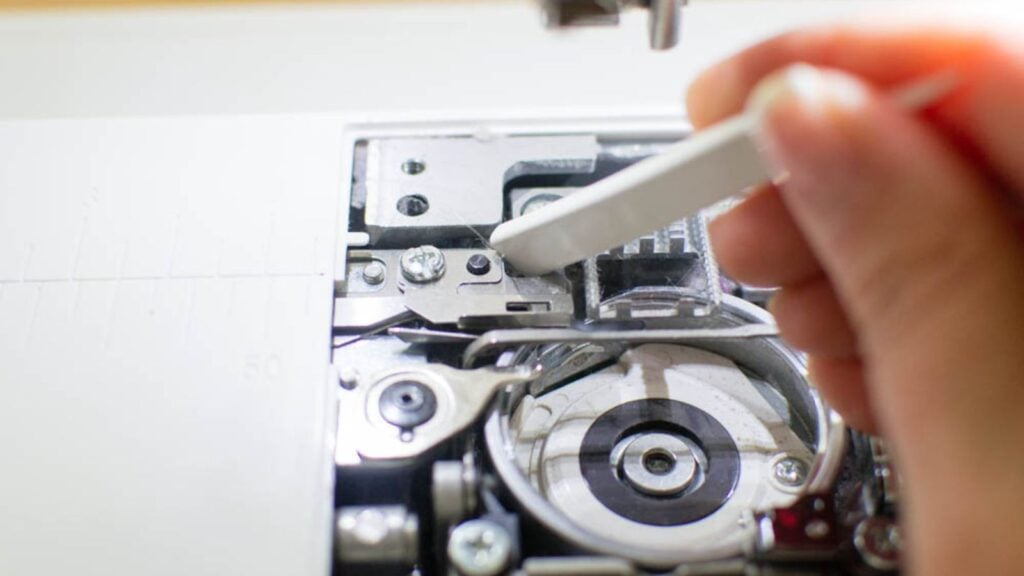10 Sewing Mistakes and the Best Ways to Avoid Them
When I first started sewing, I didn’t love it (gasp!). But now I do. I could sew all day and all night.
Good Habits Make More Enjoyable Sewing!

I was making habitual mistakes that were killing the joy. Let’s not let that happen to you. I want everyone to love sewing! So, let’s talk about those mistakes that I was making and see if any of them sound familiar.
1. Rushing Through a Project

I think I was looking forward so much to the finished product that I didn’t slow down to enjoy the process. That made my work sloppy. I was seldom proud of my finished work.
How awful is that? I learned to slow down. Now I turn off my phone, turn on my favorite music, and have a sewing hour (or two or three)!
2. Sewing Things that I Didn’t Want to Sew

My sewing time is limited, so it’s precious to me. Everyone is different, but I don’t want to spend my time sewing someone else’s work aprons, gun sleeves, or cheap clothing.
I’d rather be sewing quilts, tote bags, and sometimes unique things to wear – unique being the point! I give away almost everything I sew. Sewing for money makes me feel under-appreciated and takes away the joy. This is not the case for everyone, but if sewing for money takes the joy away for you, what will you do about that?
3. Using the Wrong Fabric for the Pattern

This used to be the problem behind so many of my sewing fails. I would fall in love with a beautiful print or a beautiful color of fabric, and I’d use it no matter what the pattern called for. That doesn’t always work.
There’s a very good reason that patterns have ‘suggested fabrics.’ Pattern makers want you to be successful, so you’ll love the project and buy another pattern. They include the important ‘suggested fabrics’ section to give you the best chance for success.
4. Using the Wrong Needle Type

Sewing needles come in various sizes and types. Universal needles will work for most projects, but if you encounter issues, try a specialty needle such as one of these:
- A jersey (or ball-point) needle is made for sewing stretchy knit fabrics. The tip of the needle will slip between the fibers without damaging them like a sharp needle might.
- Sharp needles are great for woven (non-stretchy) fabrics.
- Denim needles are specially made for sewing jeans fabric and other thick or dense fabrics.
- Topstitching needles are sharp needles with a larger eye to accommodate thicker threads.
5. Using the Wrong Needle Size

Common needle sizes include:
- Size 70/10 – Suitable for light fabrics
- Size 80/12 – Used for the most common fabrics and quilt piecing
- Size 90/14 – Used for heavier and thicker fabrics and quilting
- Size 100/16 – Used for the heaviest fabrics or multiple layers of fabric. Especially useful for sewing bags and thick wallets.
6. Using a Needle After it has Become Dull or Damaged

A dull or damaged needle can cause tension issues, create holes in your fabric, and shred the thread. All of these situations are very frustrating. When in doubt, change your needle! It’s an inexpensive fix to many issues.
7. Using Poor-Quality Materials

In almost every instance, high-quality fabric, thread, and tools are easier to use and will make your projects better. As a result, you’ll be happier with the finished product. Use inexpensive materials only when necessary and only if you are satisfied that the quality is not terrible. Stay away from old fabrics, thread, and notions whenever possible.
8. Not Taking Care of Your Sewing Machine

Sewing machines must be cleaned regularly to keep them running smoothly. Lint and dust collect under the needle plate and in the hook area, which will eventually cause sewing problems or machine damage. Remove the needle plate and remove the bobbin case as often as needed to clean these areas with a fine brush. Then apply oil if specified in your sewing machine’s manual.
9. Sewing with Inaccurate Seam Allowances

Following the seam allowance specified in your pattern is critical. If your seam allowances are not accurate, every subsequent step of your project will be affected. Pieces won’t match, clothing will not fit, and your quilt design won’t look like the pattern.
It’s worth your time to check your seam allowances occasionally. Sew a test piece and measure the seam allowance to make sure that it is correct.
10. Neglecting to Iron

Developing the habit of ironing at every step will make your sewing life ‘sew’ much easier!
- Iron your fabrics before getting started for more accurate measuring.
- Follow the instructions for fusible interfacing, including the amount of pressing time needed to ensure it the interfacing is completely fused.
- Press seams open or to the side as specified in the pattern. All seams should be pressed after sewing them, so if the pattern does not specify a direction, use your preferred way to press.
- Press your project when it is finished to help it look its best!
More from SewCanShe

Sew a Straight Line Every Time!

Learn to Sew Mini Quilts!

Get Organized!

Disclosure: some of my posts contain affiliate links. If you purchase something through one of those links I may receive a small commission, so thank you for supporting SewCanShe when you shop! All of the opinions are my own and I only suggest products that I actually use. 🙂
